Photographing dogs indoors
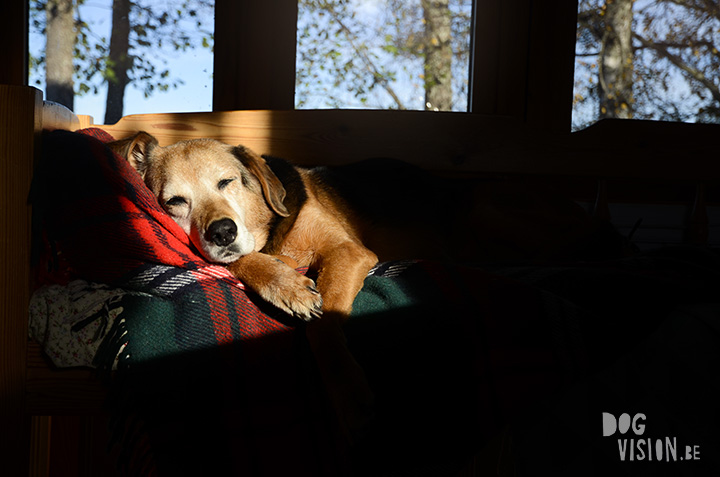
Running, playing, rolling in the mud,… all super fun moment to capture. But then you come home, copy the files and leave your camera in the bag until you go for another walk. Recognize this?
So what about all these adorable moments of peace and quietness, of sleepy heads after a long walk or happy faces around dinner time. Maybe even typical habits of snoozing in the sun by the back door. Many of these characteristic behaviors never get captured and I think there is enough reason to change that.
Photographing indoors isn’t the easiest thing, therefore some tips & tricks to get you started:
1. Low light= ISO up.
Our eyes mostly adapt easily to low light conditions but a camera isn’t fooled like that. Indoors there is less light unless you live in a house made of glass. A high ISO like 800, 1600 or 3200 will allow you to use a short shutter speed to get sharp images.
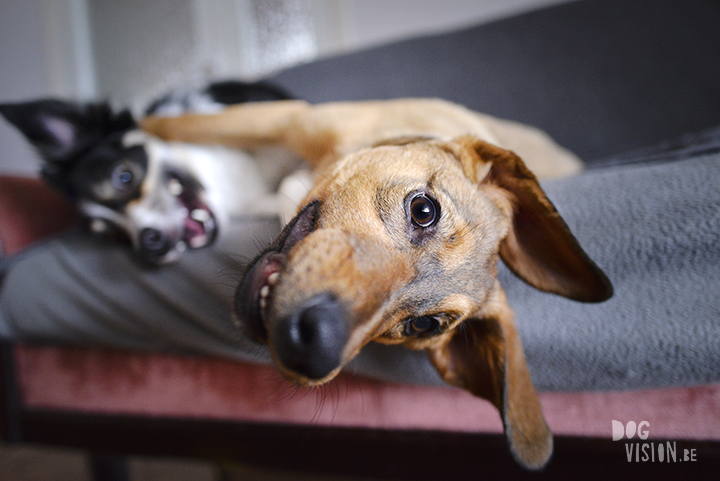
Fools on a couch? ISO 3200, 20mm, f1.8, 1/200s
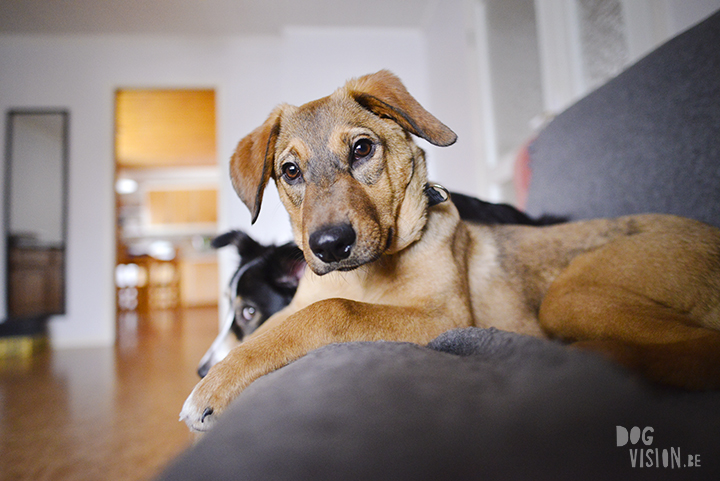
2. Low light= big aperture
Indoors I go for a lens with a large aperture (mostly prime lenses) like f1.8 or f2.0. A 50mm 1.8 would be perfect for that although you might be a bit close to your subject in a small space. Then a 35mm or a wide angle lens would be very useful. I wouldn’t easily go for a telephoto lens for two reasons: first of all because of lack of space in most interiors and secondly because you will need a faster shutter speed with this kind of lens to get a sharp image.
Another advantage of using a large aperture which results in a shallow depth of field is that the background is blurred (and you notice less clutter).
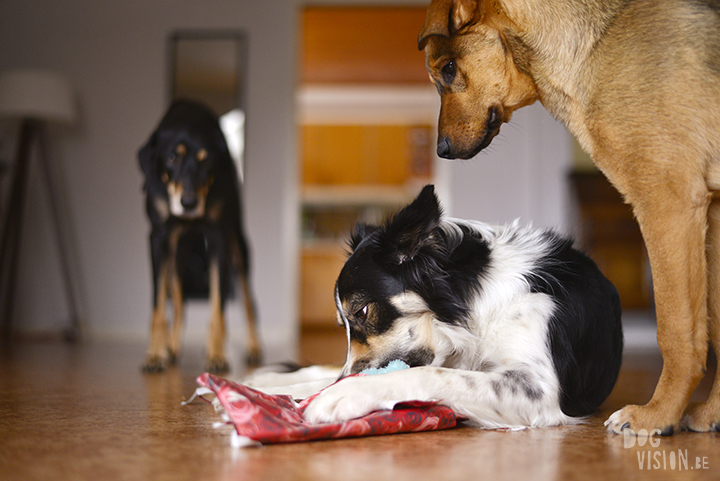
Oh! Mogwai has a gift!
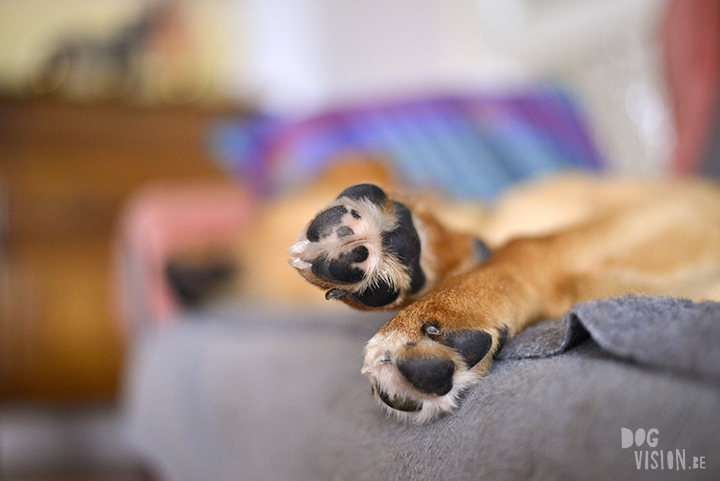
ISO 2500, 50mm, f1.8
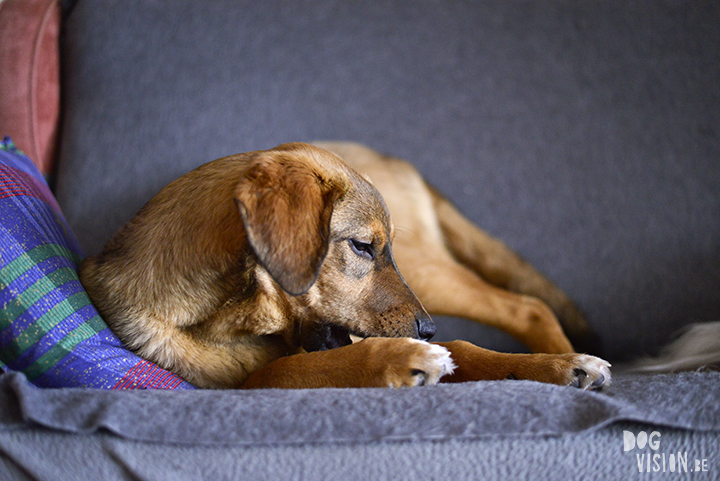
3. Using flash
When it comes to the built-in flash I would suggest not to use it unless with a longer shutter speed or the risk of losing a very cool moment. The light of this flash is very harsh, gives ugly shadows and green reflecting eyes. If you’re unlucky, even the shadow of your lens will show in the image.
Two more rewarding options are using a flash that you might bounce on the ceiling or use off-camera. Using it with moderation will give you a very natural look. Or you can use it as the main light for a flash look or the feeling of sunlight.
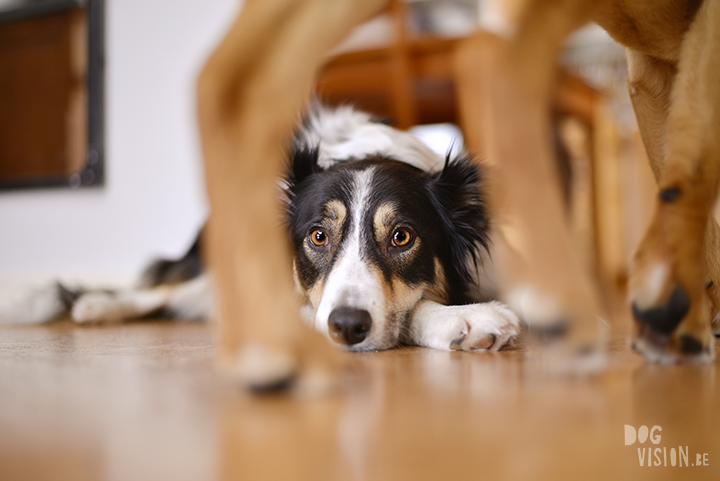
ISO 400, 50mm, f1.8, 1/80 (with flash)
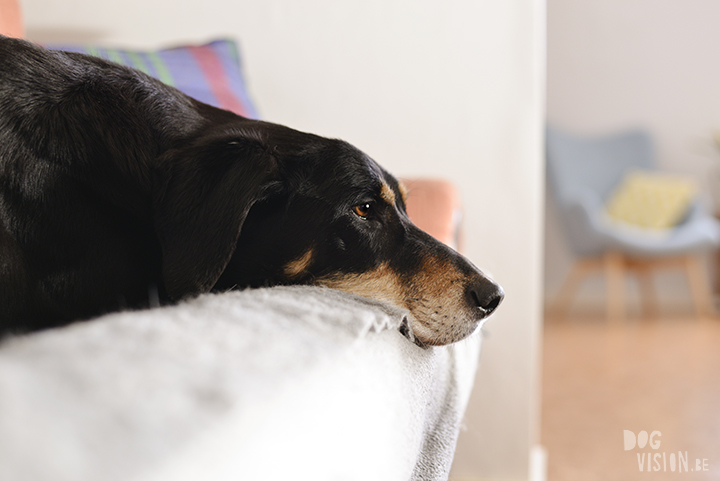
ISO 800, 50mm, f3.2, 1/80s (with flash)
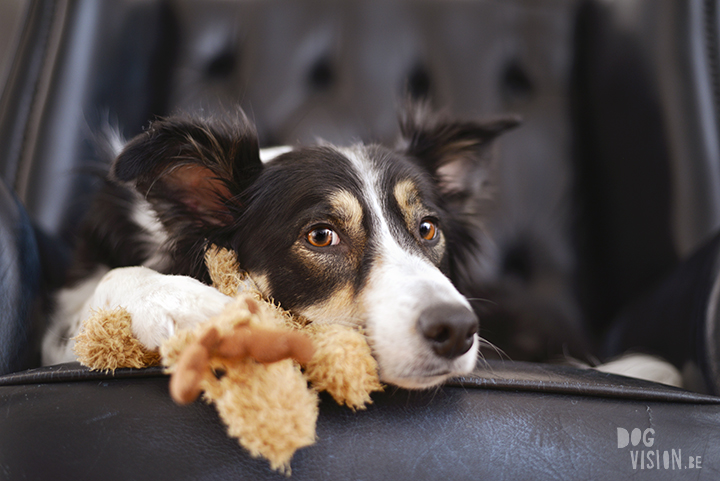
ISO 400, 50mm, f2.0, 1/80s
4) Using a reflector.
Some houses are beautifully designed with windows on every side and light on any time of the day. But face it, most houses are not. Well, mine was never designed for nor by a photographer. Most houses have difficult dark corners, dark rooms or other difficulties to overcome. Except for using a flash, you can also work with a reflector to bounce back some natural light and even out your show.
Tip: I know some places where my dogs love to hang out. When I know I might take some photographs, I will already install a reflector and keep my camera within reach and them wait for the right moment. It might sound circuitous but analyzing habits and behaviors and being ready creates the ability to capture so many moments that otherwise would get lost in time.
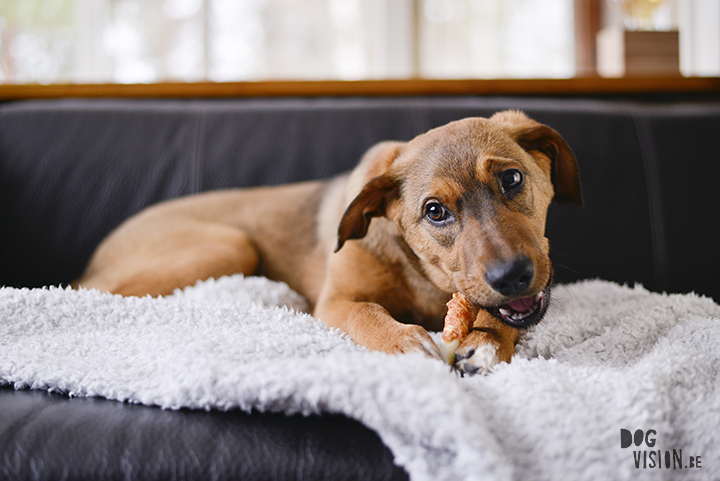
ISO 800, 50mm, f2.2, 1/300 + reflector
5) Do not disturb
I am rather clumsy but I train myself in being invisible from time to time. Not having a Harry Potter coat makes this hard work on walking gently and being quiet without looking like an idiot (that only makes dogs more curious!). I am closely watched by my dogs. Whenever I only think FOOD or wonder if we could go for a walk, they know! Also, the slightest movement towards the box with COOKIES becomes a moment I am under observation.
Therefore I often reward my dogs with a treat or cuddle when they stay calm so they learn that I don;t need to be followed around the house. I look for them once in a while and they enjoy these little moments of attention very much.
You might have to look for what works for your dog to get this type of shots. I know I have to speak slower and with a lower tone. And for some photographs, I’m sitting in the same position for at least 10 minutes to wait for them to fall asleep. I sure get my practice in patience 🙂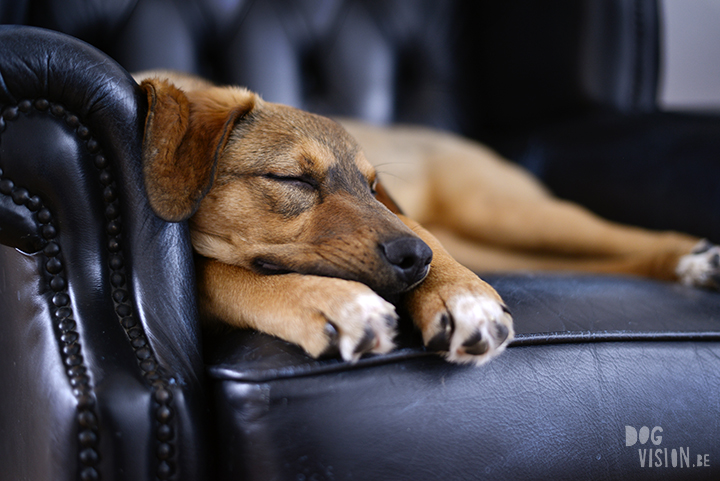
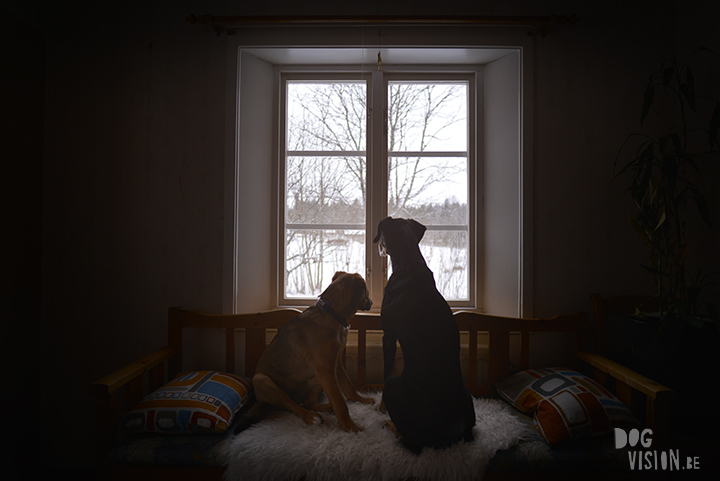
Everything is better together. ISO 500, 20mm, f1.8, 1/1600
6. A bit of sun
Does your dog also loves the golden rays of light that gently move across the room? Two of my dogs will always search for the sunlight and move across the room as time goes by. Mostly this light that peeks through the window creates a very high contrast. Higher than what most camera’s are able to capture. I set the exposure for the lightest parts of the image (so no blow out whites) and let the darker areas be underexposed.
If you do want to have detail in the darker parts of the image you can use a reflector to bounce back some sunlight.
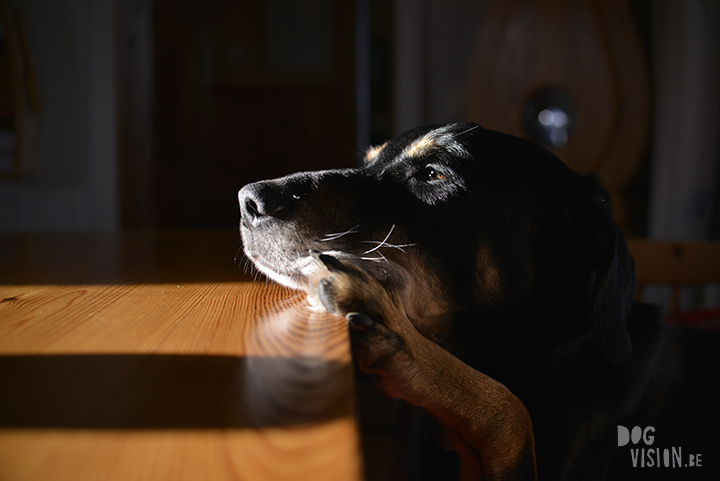
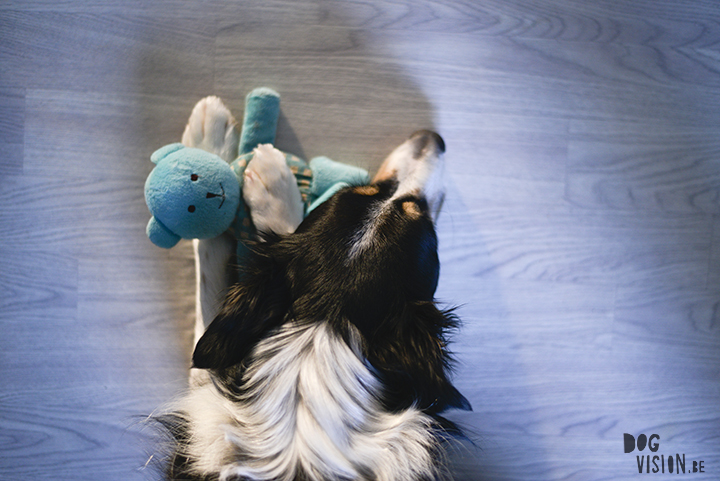
ISO 500, 50mm, f2, 1/200



Pingback: Dog photography 101 – DOGvision